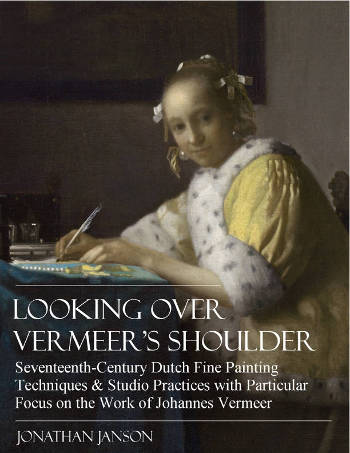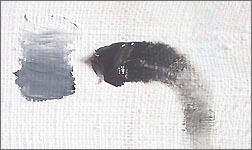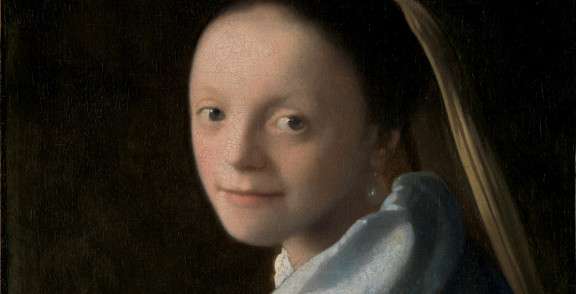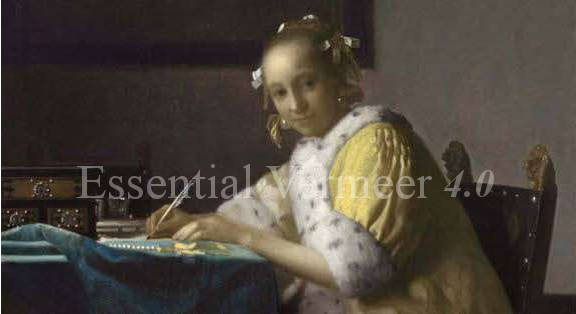Origin, History and Characteristics
Charcoal black, also known as vine black, is derived from carbonized organic materials like wood or grapevines. The production process entails heating the selected material in a controlled environment with limited oxygen to inhibit complete combustion. The resulting charcoal is cooled, finely crushed into a powder, and then purified to eliminate any residual impurities.
The fineness of the ground charcoal powder plays a crucial role in determining the smoothness of the resulting paint. This powder is combined with various binders such as gum arabic, oil, or acrylic, depending on the desired painting medium—whether it be oil, watercolor, or acrylic. Charcoal black is notable for its matte finish and high opacity. While it may not be as intense or durable as other black pigments like ivory or bone black, it is often favored for its softer texture and lack of a bluish undertone.
In terms of drying characteristics, charcoal black typically dries quickly, particularly when used in oil-based mediums. The drying time, however, can fluctuate depending on the binder and medium employed. The pigment dries to an ultra-matte finish, distinguishing it from other blacks like ivory or lamp black, which have a slight sheen. Its high opacity ensures excellent coverage.
Regarding its brushing characteristics, charcoal black generally offers a smooth application, especially when finely ground. The pigment load—the amount of pigment in the paint—can influence its handling properties. A higher pigment load will produce a more vibrant color but may make the paint more difficult to spread thinly. The pigment's versatility allows it to be compatible with a range of colors and techniques, from layering to blending.
Charcoal black has a softer consistency compared to other black pigments, facilitating easier blending. This softness, however, may make it less ideal for techniques requiring sharp lines or high contrast. Its tinting strength is lower than that of other blacks like lamp black or ivory black, requiring more pigment to achieve the same level of darkness when mixed with other colors. The pigment also exhibits a slightly warm undertone, affecting its interactions with other colors.
While charcoal black is generally non-toxic, caution is advised to prevent inhalation of its powdered form. Its lightfastness and chemical stability make it a reliable choice for artworks meant to stand the test of time. However, the specific characteristics of charcoal black can vary depending on its source and manufacturing process, so artists should be mindful of its interactions with other pigments and its drying time, especially in oil paintings.
Historically, charcoal black has been a staple in the artist's palette, dating back to ancient civilizations. It offers excellent coverage and can be used either as a standalone color, blended with other hues to create a wide range of shades, or mixed with white to produce varying grays. Its non-toxic nature makes it a safe option, although care should be taken to avoid inhaling the powder.
In contemporary painting, the use of black to darken pure colors is generally avoided as it can result in a muddy appearance. However, historical masters did not shy away from using it to tone down other pigments, even in flesh tones. Black pigments were often mixed with red and yellow, including red and yellow lakes, to create a spectrum of useful browns. These mixtures yield shades that are cleaner and less chalky compared to those made from raw umber. Artists like Vermeer appear to have employed these mixtures to create browns in multiple works.
Today's painters generally avoid using black to darken pure colors since the mixture tends to appear somewhat dirty. The Great Masters however did not exclude it for toning down other pigments even flesh mixtures. Black pigments were combined with red and yellow (including red and yellow lakes) to create a variety of useful browns. The resulting shades are immediately distinguishable from shades of raw umber because they appear cleaner and less chalky. Vermeer seems to have used these mixtures to make browns in more than one work.
LOOKING OVER VERMEER'S SHOULDER
The complete book about Johannes Vermeer's and 17th-century fine-painting techniques and materials
by Jonathan Janson | 2020

Enhanced by the author's dual expertise as both a seasoned painter and a renowned authority on Vermeer, Looking Over Vermeer's Shoulder offers an in-depth exploration of the artistic techniques and practices that elevated Vermeer to legendary status in the art world. The book meticulously delves into every aspect of 17th-century painting, from the initial canvas preparation to the details of underdrawing, underpainting, finishing touches, and glazing, as well as nuances in palette, brushwork, pigments, and compositional strategy. All of these facets are articulated in an accessible and lucid manner.
Furthermore, the book examines Vermeer's unique approach to various artistic elements and studio practices. These include his innovative use of the camera obscura, the intricacies of his studio setup, and his representation of his favorite motifs subjects, such as wall maps, floor tiles, and "pictures within pictures."
By observing closely the studio practices of Vermeer and his preeminent contemporaries, the reader will acquire a concrete understanding of 17th-century painting methods and materials and gain a fresh view of Vermeer's 35 masterworks, which reveal a seamless unity of craft and poetry.
 While the book is not structured as a step-by-step instructional guide, it serves as an invaluable resource for realist painters seeking to enhance their own craft. The technical insights offered are highly adaptable, offering a wealth of knowledge that can be applied to a broad range of figurative painting styles.
While the book is not structured as a step-by-step instructional guide, it serves as an invaluable resource for realist painters seeking to enhance their own craft. The technical insights offered are highly adaptable, offering a wealth of knowledge that can be applied to a broad range of figurative painting styles.

LOOKING OVER VERMEER'S SHOULDER
author: Jonathan Janson
date: 2020 (second edition)
pages: 294
illustrations: 200-plus illustrations and diagrams
formats: PDF
$29.95
CONTENTS
- Vermeer's Training, Technical Background & Ambitions
- An Overview of Vermeer’s Technical & Stylistic Evolution
- Fame, Originality & Subject Matte
- Reality or Illusion: Did Vermeer’s Interiors ever Exist?
- Color
- Composition
- Mimesi & Illusionism
- Perspective
- Camera Obscura Vision
- Light & Modeling
- Studio
- Four Essential Motifs in Vermeer’s Oeuvre
- Drapery
- Painting Flesh
- Canvas
- Grounding
- “Inventing,” or Underdrawing
- “Dead-Coloring,” or Underpainting
- “Working-up,” or Finishing
- Glazing
- Mediums, Binders & Varnishes
- Paint Application & Consistency
- Pigments, Paints & Palettes
- Brushes & Brushwork
Charcoal Black in Vermeer's Painting
With one single exception, The Music Lesson, charcoal black was found in all of Vermeer's paintings containing black pigments. When viewed microscopically, charcoal black reveals opaque, splintery, or fibrous particles, in which one can often still recognize the cell structure of the wood from which the charcoal was made. In addition to their main charcoal component, black and bluish-black colors often contain ultramarine (The Love Letter, Woman with a Lute, The Art of Painting, and The Allegory of Faith). The dark blue colors in The Love Letter, Woman with a Lute, and Mistress and Maid contain, in addition to their main ultramarine component, certain small amounts of charcoal black. Charcoal black was also found in gray-black as well as in light gray and gray-blue colors, sometimes with a small admixture of ultramarine. In The Music Lesson, bone black was found as the main component in a bluish-black color, as an admixture to ultramarine in a dark blue color, and as a component of gray color shades.
Vermeer also used charcoal black to dimish the chromatic intensity of natural ultramarine in the deeper shadows of the blue tablecloth which appears in a few of his works. Charcoal produces a bluish black, whereas bone black is brownish. Sometimes he mixed them together. He may have been aiming for a specific color.
However, one of the most nuanced applications of charcoal black can be seen in the background walls which appear in his interiors. Artists of the period often used black, frequently combined with umber, to render the shadows of white objects. However, The walls in Vermeer's paintings exude a pearl-like luminosity unseen in similar depictions of white-washed walls of artists working within the same genre such as Gabriel Metsu or Pieter de Hooch.
In Vermeer's most accomplished works, the viewer is not given the impression of observing lighter and darker shades of gray pigment but instead, a perfectly white wall which receives more or less light (fig. 1). Charcoal black was used to tone down the lighter areas o fthe wall, which was painted with a thick layer of white lead. In the deeper shadows, umber dominates over black in the dark gray mixture as excessive amounts of black lends a sullen quality to the shadowst.
- BOON, J. and OBERTHALER, E., "Mechanical Weakness and Chemical Reactivity Observed in the Paint Structure and Surface of 'The Art of Painting'" in Vermeer: Die Malkunst - Spurensicherung an einem Meisterwerk, exh. cat., Kunsthistorisches Museum, Vienna 2010, 235–53 and 328–35.
- CARYLE, Leslie A. "Beyond a Collection of Data: What We Can Learn from Documentary Sources on Artists' Materials and Techniques." In Historical Painting Techniques, Materials, and Studio Practice: Preprints of a Symposium, edited by Arie Wallert, Erma Hermens, and Marja Peek, 1-5. University of Leiden, the Netherlands, 26-29 June 1995.
- COSTARAS, Nicola. "A Study of the Materials and Techniques of Johannes Vermeer." In Vermeer Studies, edited by Ivan Gaskell and Michiel Jonker, Studies in the History of Art 55, Center for Advanced Study in the Visual Arts, Symposium Papers XXXIII. Washington: National Gallery of Art & New Haven: Yale University Press, 1998, 145–167.
- DELANEY, John K., Kathryn A. Dooley, Annelies van Loon, and Abbie Vandivere. “Mapping the Pigment Distribution of Vermeer’s Girl with a Pearl Earring.” Heritage Science 8, no. 4 (January 7, 2020). Accessed May 2, 2022.
- EASTAUGH, Nicholas, Valentine Walsh, Tracey Chaplin and Ruth Siddall. The Pigment Compendium 2017. Rev. ed. (e-version). London: The Pigmentum Project, 2016.
- FINK, Daniel A. "Vermeer's Use of the Camera Obscura: A Comparative Study." The Art Bulletin 53 (1971).
- GIEBE, Marlies. “Johannes Vermeers ‘Kupplerin’: Restaurierung Und Maltechnische Befunde.” In Uta Neidhardt and Marlies Giebe, eds., Johannes Vermeer: Bei der Kupplerin, 39–64. Exh. cat. Dresden: Michel Sandstein in association with Gemäldegalerie Alte Meister, Staatliche Kunstsammlungen, 2004.
- GIFFORD, E. Melanie, Anikó Bezur, Andrea Guidi di Bagno, and Lisha Deming Glinsman. “The Making of a Luxury Image: Van Aelst’s Painting Materials and Artistic Techniques.” In Tanya Paul, James Clifton, Arthur K. Wheelock Jr., and Julie Hochstrasser, Elegance and Refinement: The Still-Life Paintings of Willem van Aelst, 80–84. Exh. cat. New York: Skira Rizzoli, 2012.
- GIFFORD, M. "Painting Light: Recent Observations on Vermeer's Technique." In Vermeer Studies, edited by Ivan Gaskell and Michiel Jonker. Washington, D.C.: National Gallery of Art & New Haven and London: Yale University Press, 1998, 185–199.
- GIFFORD, E. Melanie, and Lisha Deming Glinsman. “Collective Style and Personal Manner: Materials and Techniques of High-Life 'Genre Painting'.” In Waiboer, Wheelock, and Ducos, Vermeer and the Masters of Genre Painting, 65–84, 270–74.
- GIFFORD, E. Melanie, Dina Anchin, Alexandra Libby, Marjorie E. Wieseman, Kathryn A. Dooley, Lisha Deming Glinsman, John K. Delaney. "First Steps in Vermeer’s Creative Process: New Findings from the National Gallery of Art," Journal of Historians of Netherlandish Art 14, no. 2 (Summer 2022).
- GIFFORD, E. Melanie. “Fine Painting and Eloquent Imprecision: Gabriel Metsu’s Painting Technique.” In Adriaan E. Waiboe, Gabriel Metsu, 154–79. New Haven: Yale University Press in association with the National Gallery of Art, 2010.
- GIFFORD, E. Melanie. “Lievens’ Technique: ‘Wonders in Smeared Paint, Varnishes and Oils.’” In Jan Lievens: A Dutch Master Rediscovered, edited by Arthur K. Wheelock Jr., 41–53. Exh. cat. New Haven: Yale University Press in association with the National Gallery of Art, 2008.
- GIFFORD, E. Melanie. “Material as Metaphor: Non-Conscious Thinking in Seventeenth Century Painting Practice.” In Studying Old Master Paintings: Technology and Practice, edited by Marika Spring, 165–72. London: Archetype in association with The National Gallery, 2011.
- GIFFORD, E. Melanie. “Painting Light: Recent Observations on Vermeer’s Technique.” In Vermeer Studies, edited by Gaskell and Jonker, 185–99.
- GROEN, Karin M., Inez D. van der Werf, Klaas Jan van den Berg, and Jaap J. Boon. "Scientific Examination of Vermeer's 'Girl with a Pearl Earring'." In Vermeer Studies, edited by Ivan Gaskell and Michiel Jonker. Washington, D.C.: National Gallery of Art & New Haven and London: Yale University Press, 1998, 169–183.
- HOMMES, M.H. van Eikema. "Verdigris Glazes in Historical Oil Paintings: Instructions and Techniques." In Discoloration in Renaissance and Baroque Oil Paintings. Instructions for Painters, Theoretical Concepts, and Scientific Data. Dissertation, 2002.
- HOWARD, Helen, David Peggie and Rachel Billinge. "Vermeer and Technique." National Gallery website. https://www.nationalgallery.org.uk/research/about-research/the-meaning-of-making/vermeer-and-technique
- JANSON, Jonathan. Looking Over Vermeer's Shoulder: Seventeenth-Century Painting Techniques and Studio Practices with Particular Focus on the Work of Johannes Vermeer, second edition. USA, 2020.
- KÜHN, Herman. "A Study of the Pigments and the Grounds used by Jan Vermeer." Reports and Studies in the History of Art. Washington: National Gallery of Art, 1968.
- LAURENZE-LANDSBERG, Claudia. “Neutron-Autoradiography of Two Paintings by Jan Vermeer in the Gemäldegalerie Berlin.” In Wolfgang Lefèvre, ed., Inside the Camera Obscura: Optics and Art under the Spell of the Projected Image, 213–25. Berlin: Max-Planck Institute for the History of Science, 2007.
- LEVY-HALM, Koos. “Where Did Vermeer Buy His Painting Materials? Theory and Practice.” In Gaskell and Jonker, Vermeer Studies, 137–43.
- LIBBY, Alexandra, E. Melanie Gifford, Dina Anchin, Marjorie E. Wieseman, Kathryn A. Dooley, Lisha Deming Glinsman, John K. Delaney. "Experimentation and Innovation in Vermeer’s Girl with the Red Hat: New Findings from the National Gallery of Art," Journal of Historians of Netherlandish Art 14, no. 2 (Summer 2022).
- LIEDTKE, Walter A., Richard C. Johnson, and Don H. Johnson. “Canvas Matches in Vermeer: A Case Study in the Computer Analysis of Fabric Supports.” Metropolitan Museum Journal 47 (2012): 101–8.
- LOON, Annelies van, Abbie Vandivere, John K. Delaney, Kathryn A. Dooley, Steven De Meyer, Frederik Vanmeert, Victor Gonzalez, Koen Janssens, Emilien Leonhardt, Ralph Haswell, Suzan de Groot, Paolo D’Imporzano and Gareth R. Davies. “Beauty is Skin Deep: The Skin Tones of Vermeer’s Girl with a Pearl Earring.” Heritage Science 7, no. 102 (December 11, 2019). Accessed May 2, 2022.
- LOON, Annelies van, Alessa A. Gambardella, Victor Gonzalez, Marine Cotte, Wout De Nolf, Katrien Keune, Emilien Leonhardt, Suzan de Groot, Art Ness Proaño Gaibor, and Abbie Vandivere. “Out of the Blue: Vermeer’s Use of Ultramarine in Girl with a Pearl Earring.” Heritage Science 8, no. 25 (February 28, 2020). Accessed May 2, 2022.
- MAHON, Dorothy, Silvia A. Centeno, Margaret Iacono, Federico Carό, Heike Stege and Andrea Obermeier. “Johannes Vermeer’s Mistress and Maid: New Discoveries Cast Light on Changes to the Composition and the Discoloration of Some Paint Passages.” Heritage Science 8, no. 30 (March 27, 2020). Accessed May 2, 2022.
- NEIDHART, Uta, and Marlies GIEBE, with essays by Albert Blankert, Chrisitne Klose, Johann Koller, Annalise Mayer-Meintsschel et al. Johannes Vermeer 'Bei der Kupplerin,' exh. cat. Dresden, 2004.
- PEETERS, Natasja. “The Painter’s Apprentice in Fifteenth and Sixteenth Century Antwerp: An Analysis of the Archival Sources.” Mélanges de l’École française de Rome: Italie et Méditerranée modernes et contemporaines, nos. 131–2 (2019), 221–27, https://doi.org/10.4000/mefrim.6461.
- POTTASCH, Carol. “Underdrawings in the Paintings of Frans van Mieris.” In Quentin Buvelot, Frans van Mieris 1635–1681, 62–68. Exh. cat. Zwolle: Waanders 2005.
- OBERTHALER, E., J. Boon, S. Stanek, and M. Griesser. "'The Art of Painting' by Johannes Vermeer. History of Treatments and Observations on the Present Condition." In Vermeer, Die Malkunst: Spurensicherung an einem Meisterwerk, exh. cat. Vienna: Kunsthistorisches Museum, 2010, 215–234 and 322–327. See especially illustrations 49 and 50.
- SHELDON, L., and N. Costaras. "Johannes Vermeer's 'Young Woman Seated at a Virginal'." The Burlington Magazine 148 (February 2006): 89–97.
- SIVEL, Valerie, Joris Dik, Paul Alkemade, Libby Sheldon, and Henny Zandbergen. “The Cloak of Young Woman Seated at a Virginal: Vermeer, or a Later Hand?” ArtMatters: Netherlands Technical Studies in Art 4 (2007): 90–96.
- SLUIJTER, Eric Jan. “Emulative Imitation among High-Life Genre Painters.” In Waiboer, Wheelock, and Ducos, Vermeer and the Masters of Genre Painting, 36–49.
- STEADMAN, Phillip. Vermeer's Camera: Uncovering the Truth behind the Masterpieces. Oxford: Oxford University Press, 2001.
- STOLS-WITLOX, Maartje. A Perfect Ground: Preparatory Layers for Oil Paintings, 1550–1900. London: Archetype Publications, 2017..
- VANDIVERE, Abbie, Annelies van Loon, Kathryn A. Dooley, Ralph Haswell, Robert G. Erdmann, Emilien Leonhardt, and John K. DELANEY. “Revealing the Painterly Technique beneath the Surface of Vermeer’s Girl with a Pearl Earring Using Macro- and Microscale Imaging.” Heritage Science 7, no. 64 (September 2, 2019). Accessed May 2, 2022.
- VANDIVERE, Abbie, Annelies van Loon, Tom Callewaert, Ralph Haswell, Art Ness Proaño Gaibor, Henk van Keulen, Emilien Leonhardt, and Joris Dik. “Fading into the Background: The Dark Space surrounding Vermeer’s Girl with a Pearl Earring.” Heritage Science 7, no. 69 (September 16, 2019). Accessed May 2, 2022.
- VANDIVERE, Abbie, ed., “The Girl in the Spotlight: A Technical Re-Examination of Vermeer’s Girl with a Pearl Earring.” Special Collection, Heritage Science 7–8 (2019–20). Accessed May 2, 2022.
- VANDIVERE, Abbie, Jørgen Wadum, and Emiliene Leonhardt. “The Girl in the Spotlight: Vermeer at Work, His Materials and Techniques in Girl with a Pearl Earring.” Heritage Science 8, no. 20 (March 2, 2020). Accessed May 2, 2022.
- VANDIVERE, Abbie. “The Technical (Re-)Examination of Vermeer’s Girl with a Pearl Earring.” Heritage Science 8, no. 26 (March 11, 2020). Accessed May 2, 2022.
- VERSLYPE, Ige. “The Restoration of ‘Woman in Blue Reading a Letter’ by Johannes Vermeer.” The Rijksmuseum Bulletin 60, no. 1 (2012): 2–19.
- WALD, Robert. “The Art of Painting: Observations on Approach and Technique.” In Sabine Haag, Elke Oberthaler, and Sabine Pénot, Vermeer, Die Malkunst: Spurensicherung an einem Meisterwerk, 312–27. Exh. cat. St. Pölten: Residenz in association with Kunsthistorisches Museum, Vienna, 2010.
- WALLERT, Arie. “The Materials and Methods of Michiel Sweerts’s Paintings.” In Jansen and Sutton, Michiel Sweerts, 37–47.
- WADUM, Jørgen, René Hoppenbrouwers, and Luuk Struick van der Loeff. Vermeer Illuminated: Conservation, Restoration and Research: A Report on the Restoration of the View of Delft and the Girl with a Pearl Earring by Johannes Vermeer. Wormer: V+K in association with the Royal Cabinet of Paintings Mauritshuis, The Hague, 1994.
- WADUM, Jørgen. "Contours of Vermeer." In Vermeer Studies. New Haven and London, 1998, 201–223.
- WHEELOCK, Arthur K., Jr. Vermeer and the Art of Painting. New Haven: Yale University Press, 1995.
- WIESEMAN, Marjorie E. “Acquisition or Inheritance? Material Goods in Paintings by Vermeer and His Contemporaries.” In Waiboer, Wheelock, and Ducos, Vermeer and the Masters of Genre Painting, 50–63.
- WIESEMAN, Marjorie E., Alexandra Libby, E. Melanie Gifford, Dina Anchin. "Vermeer’s Studio and the Girl with a Flute: New Findings from the National Gallery of Art," Journal of Historians of Netherlandish Art 14, no. 2 (Summer 2022).


While the book is not structured as a step-by-step instructional guide, it serves as an invaluable resource for realist painters seeking to enhance their own craft. The technical insights offered are highly adaptable, offering a wealth of knowledge that can be applied to a broad range of figurative painting styles.
 fig. 1 Woman with a Pearl Necklace (detail)
fig. 1 Woman with a Pearl Necklace (detail) 




 or anything else that isn't working as it should be, I'd love to hear it! Please write me at:
or anything else that isn't working as it should be, I'd love to hear it! Please write me at: